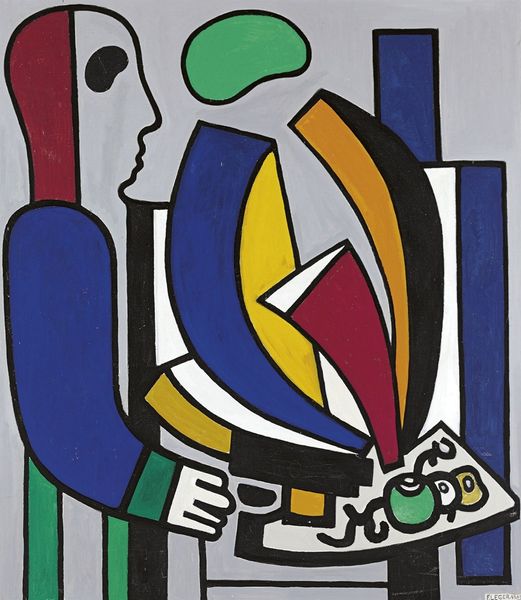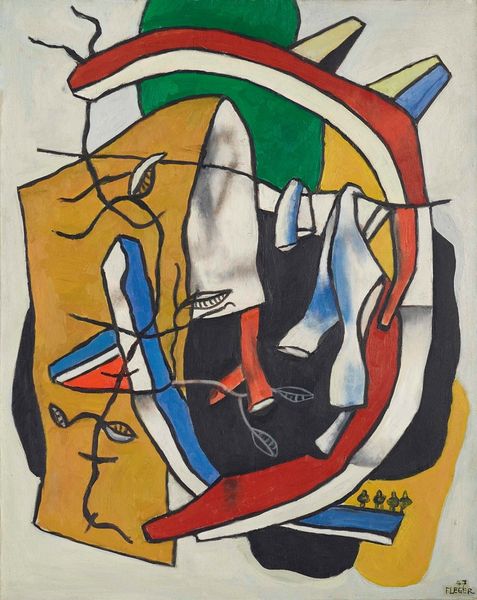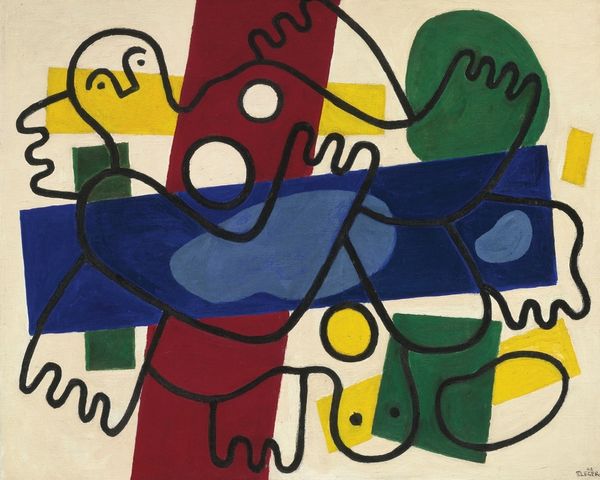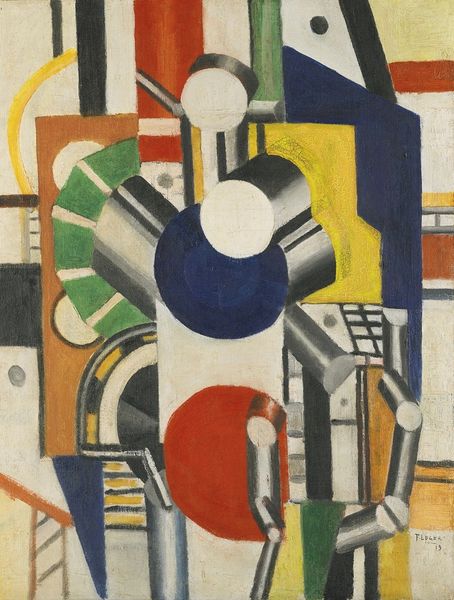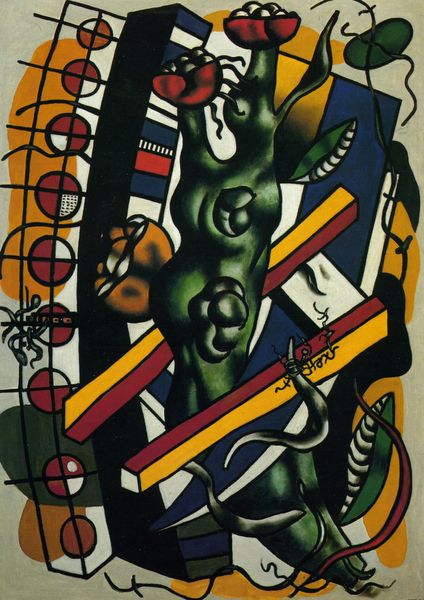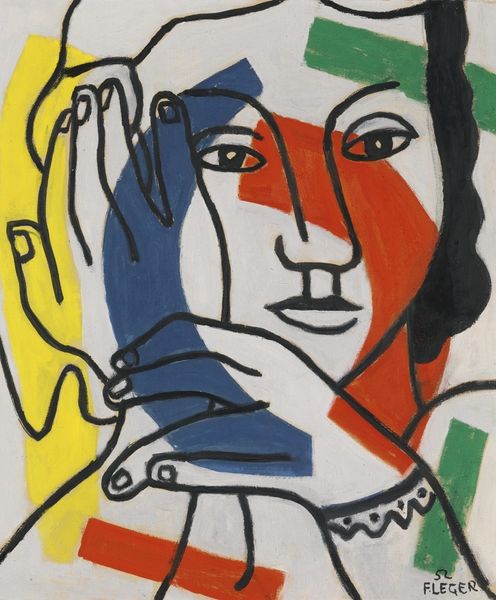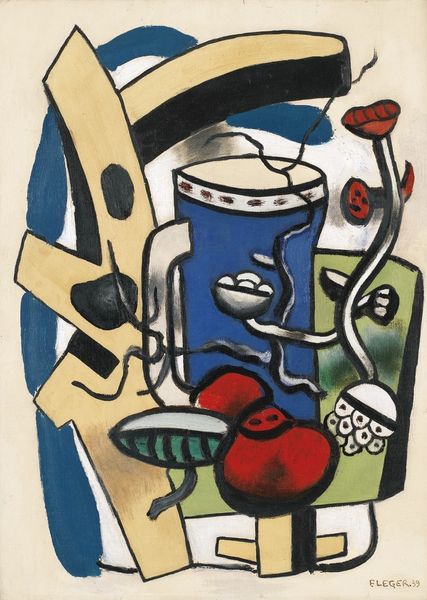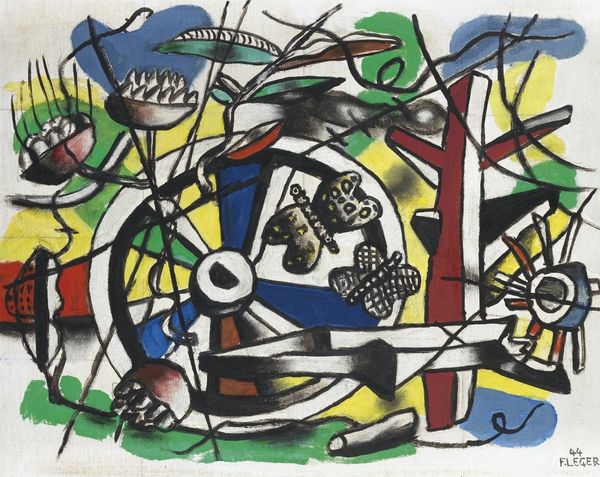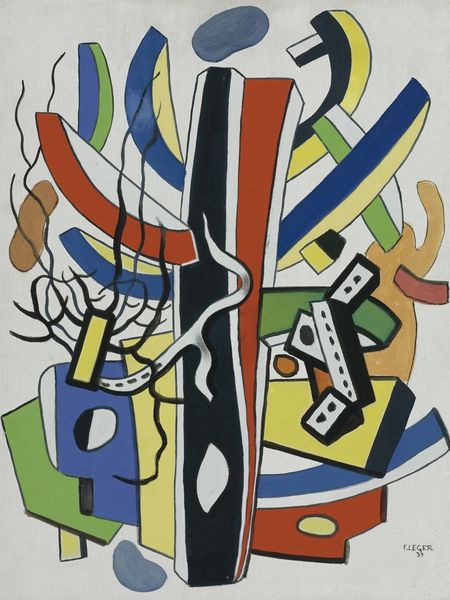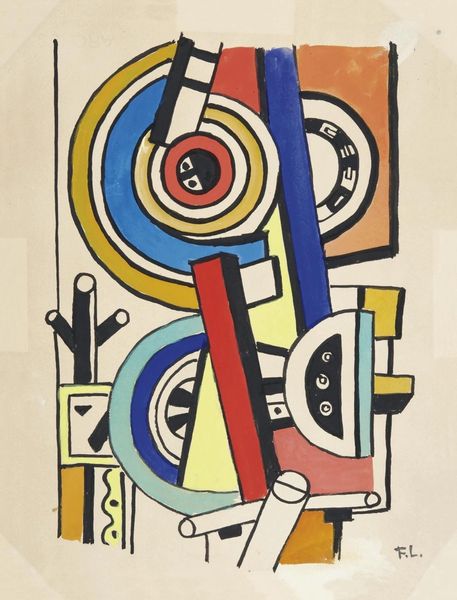
Copyright: Modern Artists: Artvee
Curator: Fernand Léger's "L’homme à la nature morte," or "Man with Still Life," completed in 1938, presents us with an intriguing study in form and color. Léger, deeply affected by his experiences in World War I, moved away from earlier cubist fragmentation, towards a style marked by simplified forms and bold, primary colors. Editor: It's funny, isn't it? I'm immediately struck by the stark contrast. There’s something almost childlike about it. The shapes are so… elementary. And yet, there’s a deep sense of thoughtful balance. It’s almost unsettlingly serene. Curator: That serenity, I believe, comes from Léger's intention to represent the machine age. He sought a harmony between human figures and mechanical elements, seeing beauty in the modern world’s forms. This period also reflects his involvement with social realism and an ideal of art serving the people. Editor: Serving the people with geometry! I can almost hear a utopian call to breakfast. What's really drawing my eye is the relationship between the rather robotic man and the chaotic still life he's next to. He’s oddly rigid next to these colorful swooshes of… what even is that? Is that even breakfast? Curator: Well, the elements of the still life, with the teacup and abstracted fruits, provide a visual counterpoint to the man. The flat colors and clean lines emphasize objectivity and industrialization, aligning with Purist aesthetics where art celebrates utility and structure. Editor: Right. Structure! Almost a celebration of mundane life... made monumental and frankly, quite puzzling. So, in a time hurtling toward more conflict, Léger offers a picture of calmness by embracing industry... quite a message. It leaves me wondering, though: did that green blob ever make it into the teacup? Curator: The open-ended interpretation is very much Léger’s aim. Editor: I leave with a quiet sense of pondering around a very odd table.
Comments
No comments
Be the first to comment and join the conversation on the ultimate creative platform.

